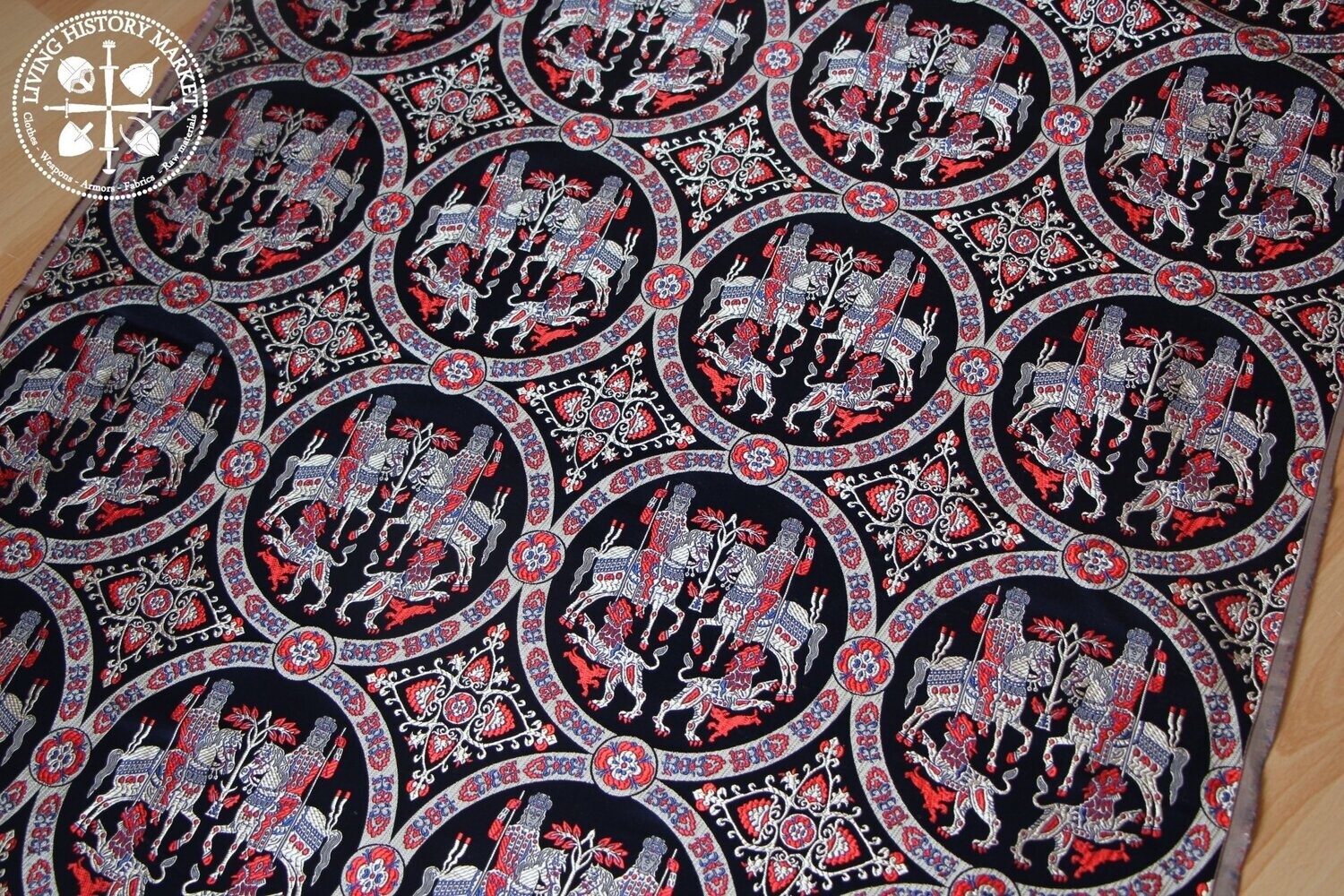Saint Austremoine brocade silk - 8/10 century
Authentic silk brocade fabric. Main fabric: silk. Other fibers: rayon.
Woven. Accurate copy of the original pattern.
You can select the desired lenght, from 20cm to 250cm.
75 cm width.
4 medaillons in a row.
Medaillon diameter 18cm approx.
Historical description
This brocade silk was produced during the iconoclast period, into Byzantium workshops (726-843).
Original artifact now stored at the "musée des tissus de Lyon", France.
Our first record of this piece is a source referring to the translation—rehousing—of the relics of Saint Austremoine from the church at Volvic, in the modern Puy de Domes in France, to the Abbey of Mozac, some four miles to its east. The translation happened under the patronage of King Pepin, who, it is recorded, provided a piece of silk to wrap them, had the bundle marked with his royal seal, and traveled with them to their new home.
The name Pepin in this record was originally believed to refer to the "Pre" Carolingian king, Pepin the Short (r. 751–68), father of Charlemagne, and the date was interpreted as February 1, 764. However, as Maximilien Durand points out, the Pepin referred to in the document about the rehousing of Saint Austremoine’s relics was more probably Pepin II of Aquitaine (838–64), and the date should be read as February 1, 847, or probably 848. Other textual evidences and recent technical analysis supports this later date.
For now, therefore, the weight of evidence suggests an early or mid-ninth-century origin for the silk. This leaves uncertain how Pepin II acquired the silk, although Durand suggests it was perhaps a gift from Emperor Theophilos (r. 829–42) to Louis the Pious (r. 814–40) in recognition of his help in the campaign against the Arabs. It would then have passed down to Louis’s successors, Pepin I of Aquitaine (r. 797–838) and to his son, Pepin II.
The brocade silk piece has been cut and stitched, suggesting it might have been made into a piece of clothing
, but we do not know whether this was before or after Pepin’s acquisition.
The general composition of the decoration is a hybrid, between the hunting scene, of the Bahram Gur type (composed of two horsemen, prey, as well as dogs or lions, arranged symmetrically around a tree of life) and the silk brocades. known as “to the emperors.” These brocades mainly depict Byzantine rulers in a triumphant position.
We relied on fragments of similars brocaded silk fabrics "of the emperors" to complete the missing parts of the shroud of Saint-Austremoine.
